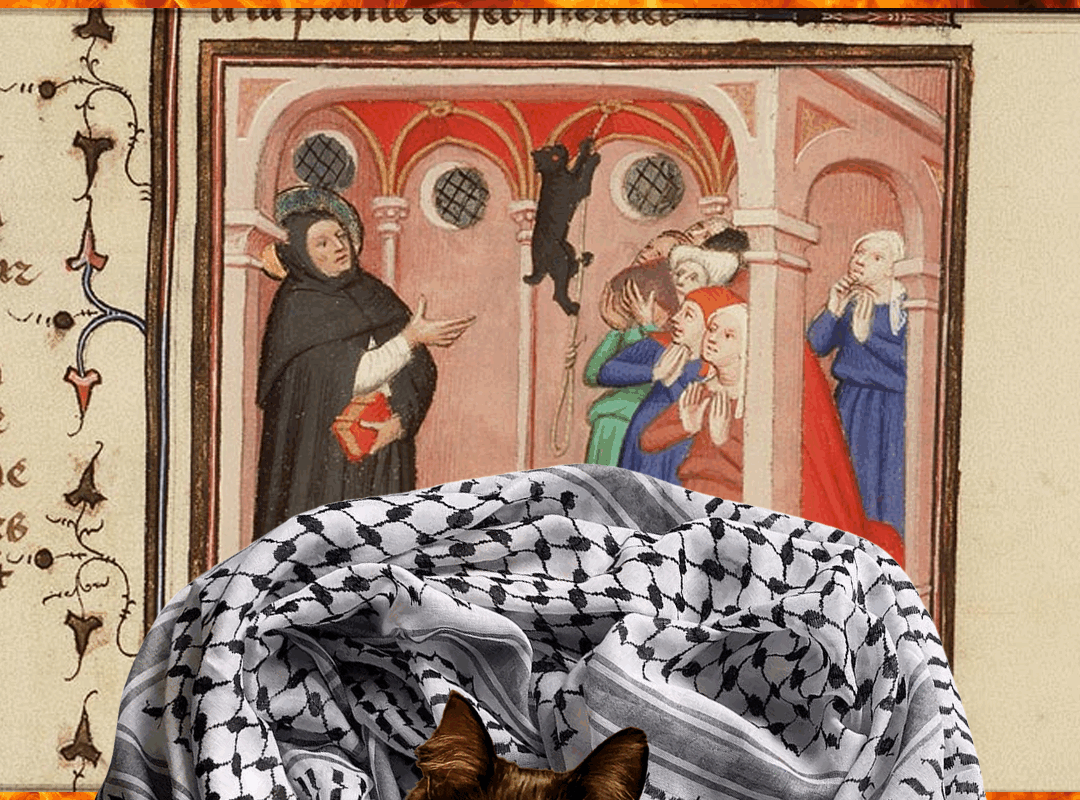As a socially engaged artist I’ve developed an interest in the role of the arts in perilous times, particularly in finding creative, alternative ways of intervening in the current social and political crisis, something all cultural workers should be interested in, especially now. What is very noticeable is that at the moment when we need artists and creatives to be taking risks, many are refusing to touch certain topics, usually out of fear. Even worse, some embrace the role of Leni Reifenstahl, allowing their art to be used to whitewash and legitimize oppressive bullshit. Several years ago while working for the largest public arts organization in my city I became intimately familiar with how art was mobilized by capitalists and status quo people to put a pretty face on the same old ugly capitalist/colonial exploitation. The complicity of my former employer in the gentrification crisis in my hometown of Philadelphia, and the complicity of many liberals in the exploitative nonprofit industrial complex, is why I decided to commit myself to art in service of liberation instead of status quo and ego. Pivoting to addressing social problems via art is also a tactical consideration. Moving forward means changing hearts and minds as we unravel and challenge the toxic legacy of European settler colonialism and the racist logic that underpins it. The power of art offers us an opportunity to educate about complex issues, agitate those who are complacent, and neutralize the general aversion to grappling with difficult subjects. I hope this photo essay will inspire activists and social change advocates to lean more heavily on the arts as a tool for social change.
The perspective and worldview I’ll be sharing here is that of the subaltern. Subalterns “are the colonial populations who are socially, politically, and geographically excluded from the hierarchy of power of an imperial colony and from the metropolitan homeland of an empire.” This perfectly describes individuals like myself who come from ghettoised and intentionally impoverished situations inside of the Amerikkkan empire. Unlike most people who come from where I come from, I’ve been able to gain some education, travel to Europe, and have developed a certain awareness after connecting the dots between oppression here and oppression there. My decision to focus much of my life on activism and social change has been a direct result of living in Germany in my early twenties and having some wacky adventures in the infamous sex industry there. There I saw mostly people of color and Eastern Europeans experiencing the kind of exploitation and oppression facing ghettoized Black folks back home. These experiences tremendously impacted my activism and the direction of my artistic practice and are a part of my over twenty year relationship with Germany.
As an activist the medium of social practice art presented itself as the best option for tackling complicated subjects. Social practice art is not so much about a finished product or piece to hang on a wall; it’s more about the process itself, the relationships and communities involved and the social issue one is focusing on. During 2020’s summer of upheaval after the brutal, on camera murder of George Floyd I began contemplating how to use art to respond to the crises of anti-Blackness and rising fascism. That summer I also began looking into finally getting a cat. I did not realize it then, but this cat would form the conceptual foundation of my socially engaged art project based on the work of the German Jewish scholar and author Victor Klemperer.
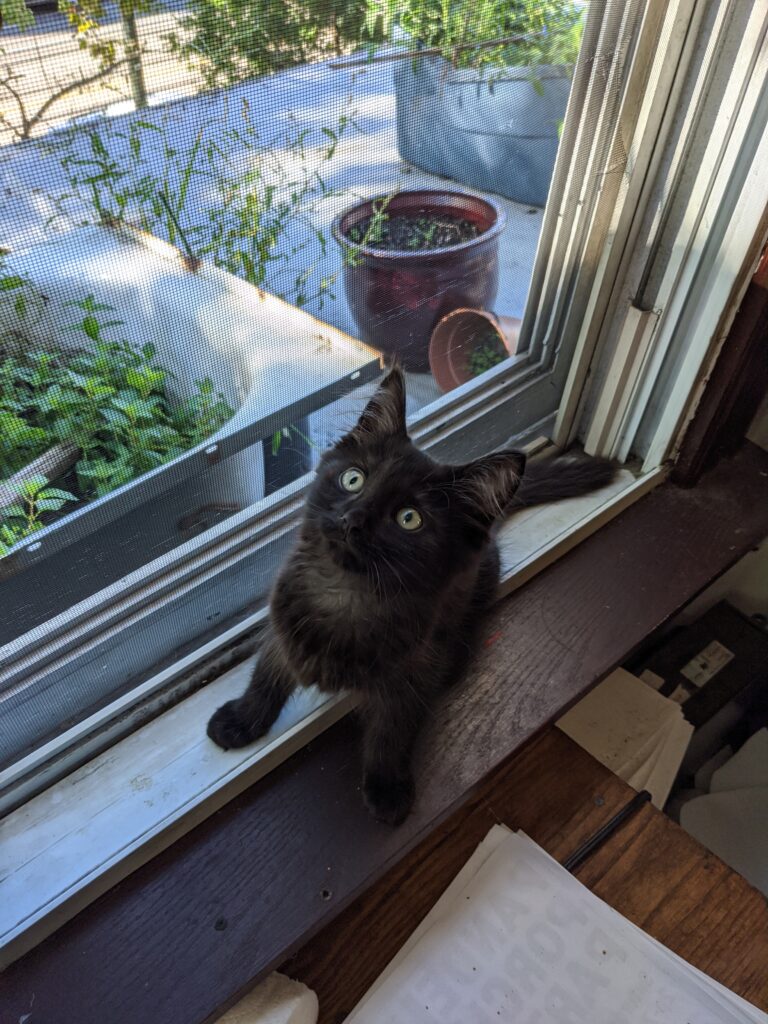
I named the kitten ‘Victor’ because of my great appreciation for Klemperer’s work which has taught me many valuable lessons about fascism and how it functions. Another inspiration for my cat’s name was that Victor and his wife Eva were cat lovers who were forced to have their beloved pet Muschel euthanized during WWII after the nazis declared that Jewish households could no longer own pets. More on this later. My journey with Victor the cat eventually took me back to Germany. I once joked with someone that the cat was on his own journey and I was simply his chaperone, but after looking back over everything that’s happened maybe there’s more truth to that than I realized.

Besides Victor and Eva Klemperer, one of my major inspirations has been the Black Marxist philosopher and author Gerald Horne. He is most well known for his provocative reexamination of the myth of 1776 as a great leap forward for Amerikkka and the world. I started getting into Gerald Horne around the time I got my cat. Horne’s commitment to looking deeper into history inspired me to investigate the history of the stigmatization of black cats. It might seem like a random and meaningless association to make at first glance, but looking at the history of the persecution of cats in Europe illuminates other systems of oppression and how they function. The enduring stigma against black cats is no joke and helps explain why they are adopted less often and why they’re associated with dark forces and bad luck.
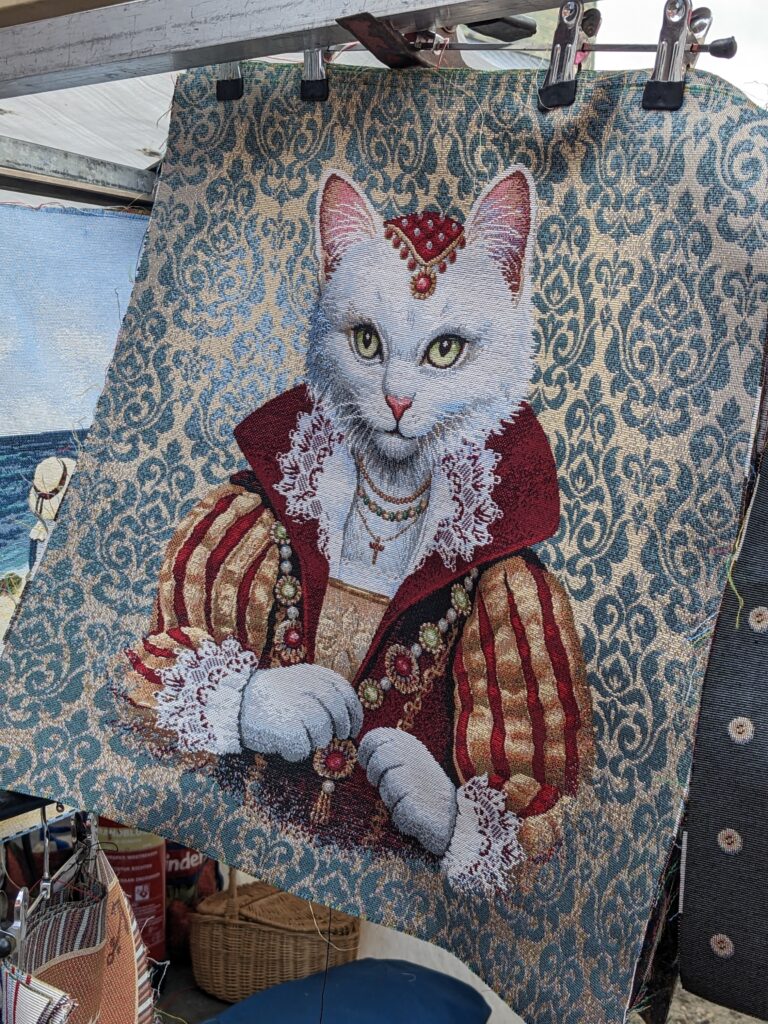
When I began digging into the history of this discrimination I was shocked to learn that the stigma that black cats carry today can be traced back to a German nobleman named Konrad von Marburg.
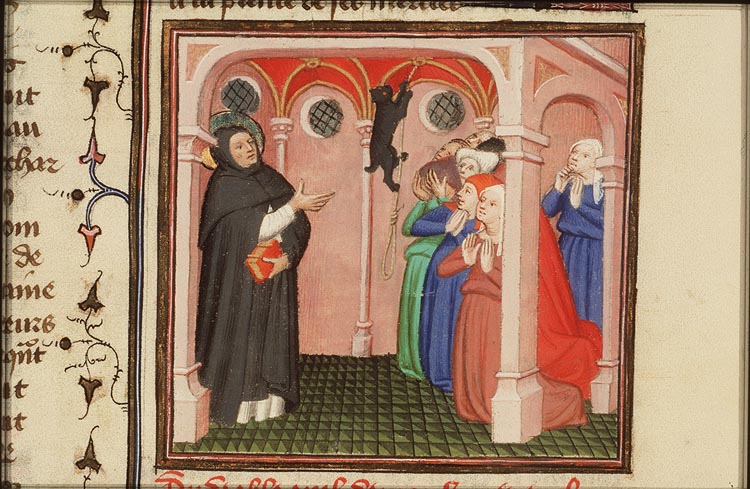
Konrad von Marburg was one of the first inquisitors hired by the Catholic church. Inquisitors located and punished people following unauthorized Christian sects or still adhering to their traditional spiritual practices. Because of his proven harsh track record, Pope Gregory IX appointed Marburg as the first grand inquisitor of the German region. Marburg reported back to the Pope something quite strange. He claimed to have witnessed a Satanic ritual where novices were initiated into a coven of witches. These novices were required to:
…pay homage to “a black cat” which emerged ”from a kind of statue which normally stands in the place where these meetings are held.” The whole coven was required to kiss the cat’s behind, and once they had done this, a wild sexual orgy occurred. Once the lights came back on, “from a dark corner, the figure of a man emerges.” This ‘man’ was Lucifer, who the whole company firmly believed to have been wronged by God. As was to be expected of a former angel “The upper part of his body from the hips upward shines as brightly as the sun.” However, his fall from grace was encapsulated by his lower body where “his skin is coarse and covered with fur like a cat.”
After Marburg reported what he supposedly witnessed to Pope IX, a papal decree called the Vox in Rama was issued. This decree explicitly identified cats as associated with Satan, witches and heretics. This was part of the Catholic Church’s efforts to purge Europe of pagan influence. For the Egyptians, Romans, Irish and others, cats were symbols of power, fertility, and represented a connection with the spirit world. After being labeled by the church as avatars of the devil, cats began to be persecuted and murdered by superstitious medieval Europeans. Because of Marburg’s descriptions that were elevated by the pope, black cats bore the brunt of the persecution. The Danish carnival tradition of Fastelavn is a good example of this. During the medieval period black cats in Denmark were targeted and beaten to death to represent the defeat of evil spirits necessary to usher in the spring season.
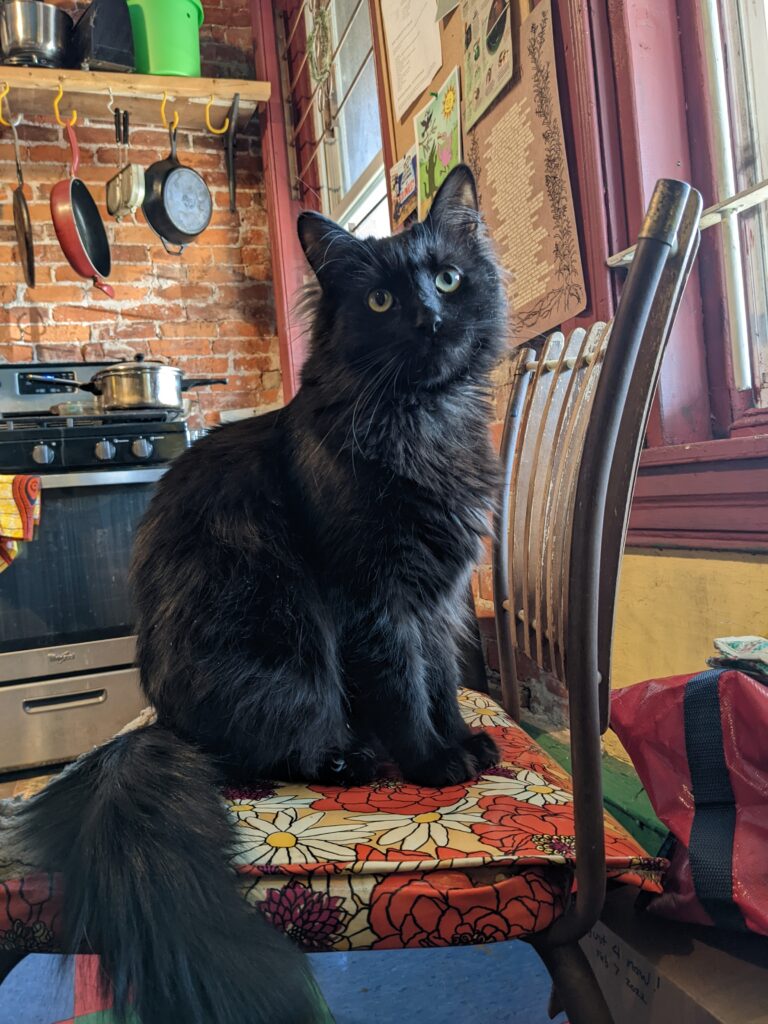
Marburg’s influence on the persecution of cats in Europe shows the pernicious influence of both the Catholic Church and the German ruling class which has always been at the forefront of supporting terrible things (like Hitler). The similarities between the demonization of cats and the demonization of human beings illustrates how stigma can endure across generations. Gerald Horne has touched on this, explaining how religion formed both the basis and the justification for colonialism and chattel slavery. The Vox in Rama issued by Pope IX was only one of a series of papal decrees that had far reaching consequences. The Dum Diversas (1452) and the Romanus Pontifex (1455) were papal decrees issued by Pope Nicholas V authorizing Portugal to enslave non-Christians on the African continent. The most consequential and far reaching of these papal decrees was probably Pope Alexander VI’s Inter Caetera. This decree authorized Spain and Portugal to colonize the Americas and justified the enslavement of Africans and Native Americans. It’s within this context of the Catholic Church’s support for atrocities that we must view Christopher Columbus’ infamous voyage of 1492, a voyage that was embarked on primarily because of Columbus’ desire to forcefully retake Jerusalem from Arab control. The religious mania of Columbus and his desire to restart the Crusades is intimately connected with the modern day oppression of Palestinians. There will be much more to say about all of this and about Columbus in part two of this essay.
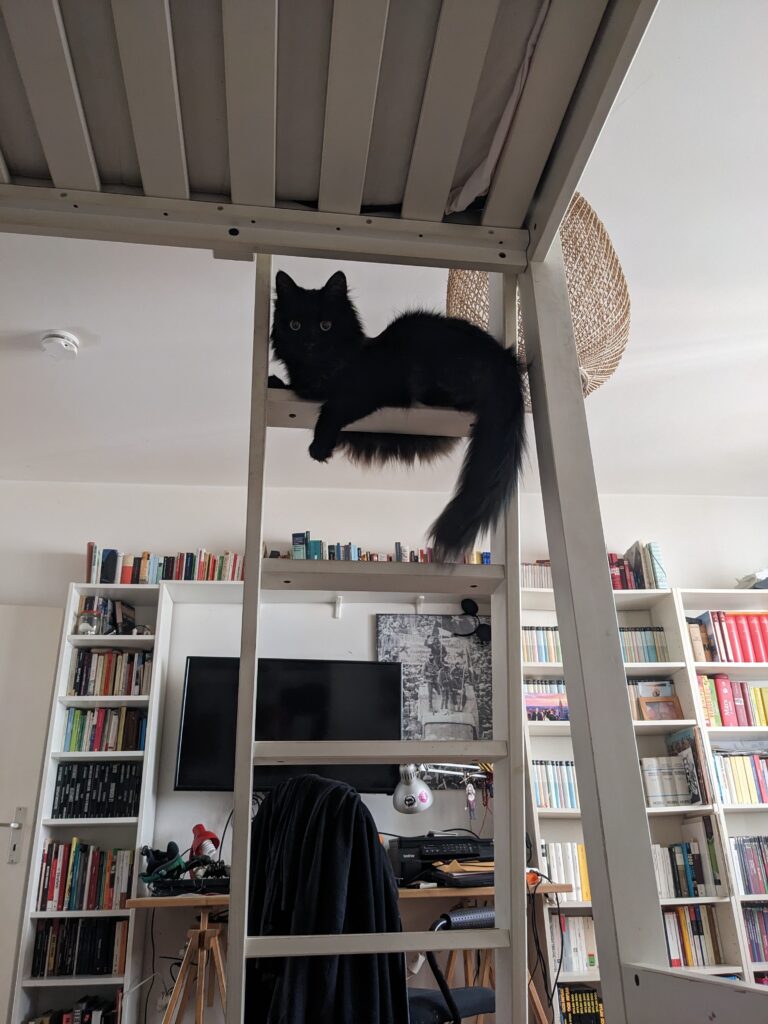
Without understanding the history of Christian domination in Europe and the role of the Christian church in legitimizing systems of oppression it is impossible to fully grasp what is happening today. For example, why Chancellor Merz praised the state of Israel for doing Europe’s “dirty work” in Iran. The extreme dehumanization of Muslims and Palestinians and the deranged cynicism and hypocrisy of our leaders cannot be fully understood without some knowledge of how the past is impacting current events. There needs to be a greater awareness of how these Middle Eastern wars in the modern era are the latest chapter of the religious wars/Crusades seeking to assert Christian dominance over Muslims. Today, the state of Israel is both a pawn and a weapon that Christian Zionists support for religious reasons. When we scan the social and political landscape objectively we can see that Zionism has effectively replaced Christianity as the orthodoxy that cannot be challenged; its critics have become the modern day heretics.
Heresy is any belief or theory that is strongly at variance with established beliefs or customs, particularly the accepted beliefs or religious law of a religious organization. A heretic is a proponent of heresy.
Recently, Israel’s ambassador to the United Nations called Francesca Albanese a “witch” – a good example of someone being literally branded a modern day heretic.

In our modern era heretics are no longer burned at the stake. But as we can see in Gaza, those branded as heretics are still subjected to brutal punishment, torture and murder. Dehumanized as “Amalek” and generally shunned by polite society, Palestinians are the quintessential modern day heretics. They along with their supporters often find themselves brutalized by the authorities, the subject of smear campaigns, or losing their careers and livelihoods.
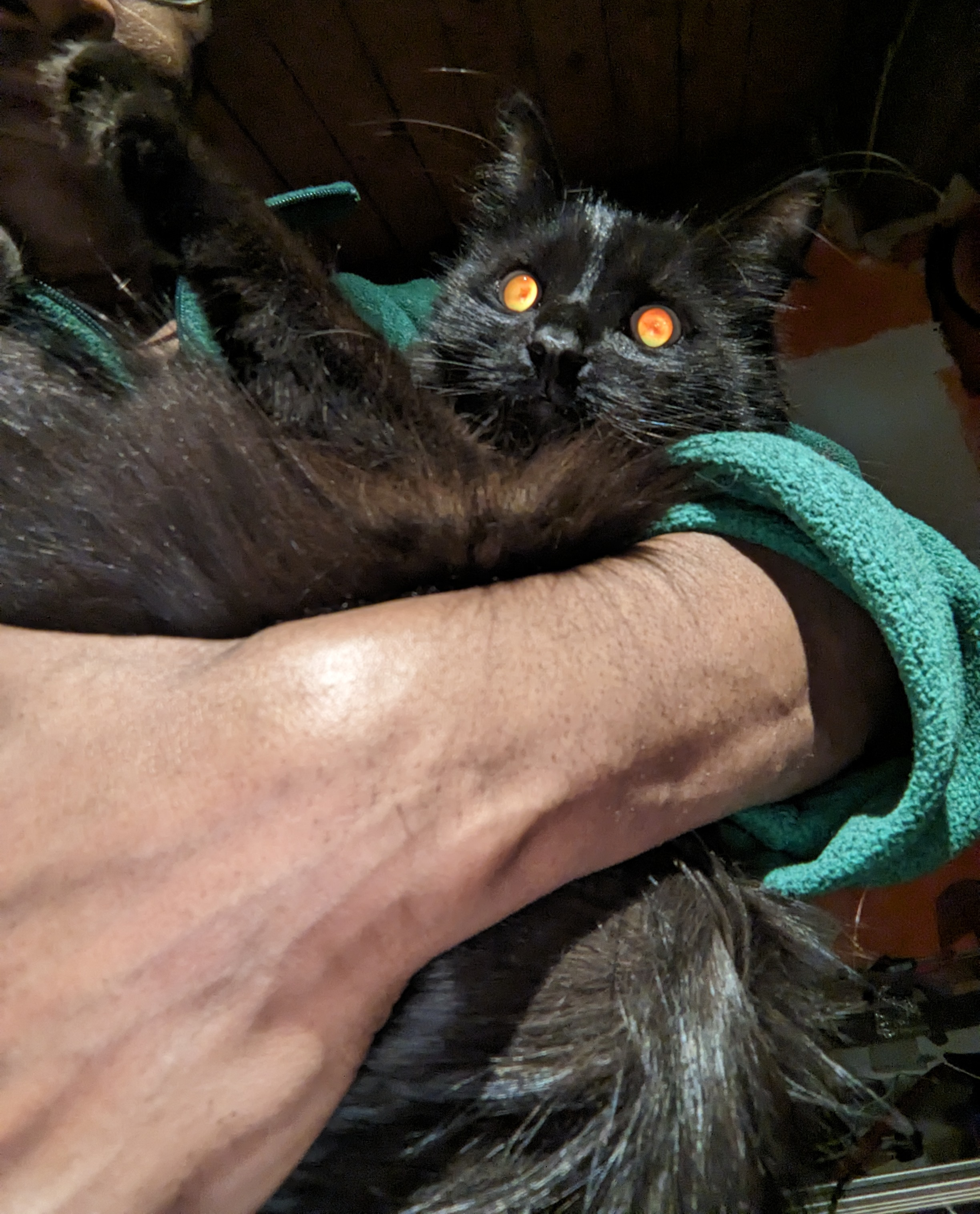
The photo above was taken in a Berlin leftist space that will remain unnamed for now. This space is where I experienced a taste of what it must have felt like to be a heretic in medieval Germany. While living in Berlin a few years ago I was struggling with the cost of housing and reached out to a local leftist about the possibility of some mutual aid. I came into conflict with someone in the house over a misunderstanding about my cat (they weren’t informed that I was bringing him with me to the guest area). I then found myself in a “plenum” facing some of the most ridiculous shit I’ve ever encountered in my life. Total stupidity, total hypocrisy, and even worse, a complete and total inability or unwillingness to hear my point of view. Despite knowing that I was in a difficult situation with nowhere to go, this room full of white Germans decided to vote to kick me out of the space. Then, on the day they were expecting me to leave, a white German woman sent the only Black guy living there to threaten me. The next morning, three men came to threaten me again and demanded I leave immediately. Things would have gone much differently if I were totally apolitical and not known as a supporter of Palestinian rights. Observing what’s been happening in Germany over the past few years has helped me put this experience in perspective. Seeing protestors being punched in the face and maimed by police on the streets of Berlin helped me understand the behavior I experienced as an extension of the will of the state. In Germany under their demented “staatsraison” Palestinians and their supporters are essentially viewed as heretics who threaten the orthodoxy of Zionism. This orthodoxy is not only about dogma and personal opinions; it’s about money, resources, employment, social standing and institutional access. Those who deviate from the authorized, state sanctioned opinion on the state of Israel will be punished. The burning of heretics in Germany is no longer literal (for now), but on a symbolic level it is still happening regularly.

While studying the life and work of the German Jewish diarist and author Victor Klemperer it dawned on me that Jews who criticize Zionism are now considered heretics as well. Considering the history there, the situation in Germany is like something out of the Twilight Zone. In the land where swastikas once fluttered proudly from all government buildings there is no consideration for the fact that before nazism Jewish life was full of debate and various opinions on all sorts of subjects. Before the despicable mass murder that German nazis and their collaborators committed, Zionism was a relatively unpopular clique in Germany. It was unpopular because most Western European Jews were on their way to fully assimilating and had no interest in a far away Middle Eastern colony. The following diary passage written in November of 1933 shortly after the nazis came to power is a good example of what is now considered heresy by the mainstream establishment.
Walter Jelski has gone to Palestine. Perhaps he will prosper there. After all, it is like something from a novel. I cannot help myself, I sympathize with the Arabs who are in revolt there, whose land is being “bought.” A Red Indian fate, says Eva.
Victor Klemperer is a representation of inconvenient Jewish voices and perspectives. These voices have been silenced and strategically ignored because their opinions are considered heretical by the establishment. Klemperer’s sympathy for Palestinians who were “in revolt” would get him thrown in jail if he were alive and expressing these opinions publicly in Germany today. We are allowed to have sympathy for IDF soldiers, but not for members of the Palestinian resistance. Perspectives like Klemperer’s are important because his critiques of Zionism 1) come from someone who lived through and survived nazi terror and the worst antisemitism to have ever existed and 2) his critiques are on a scholarly, philosophical level backed up by facts. I need to once again invoke the Twilight Zone because that was how it felt to be in Germany several years ago looking for opportunities to share my insights on Klemperer’s work. What I discovered is that Jewish perspectives are not welcome in Germany if they’re not aligned with Zionism, not even from Jews themselves. Considering Germany’s tragic history this represents a political and moral crisis.
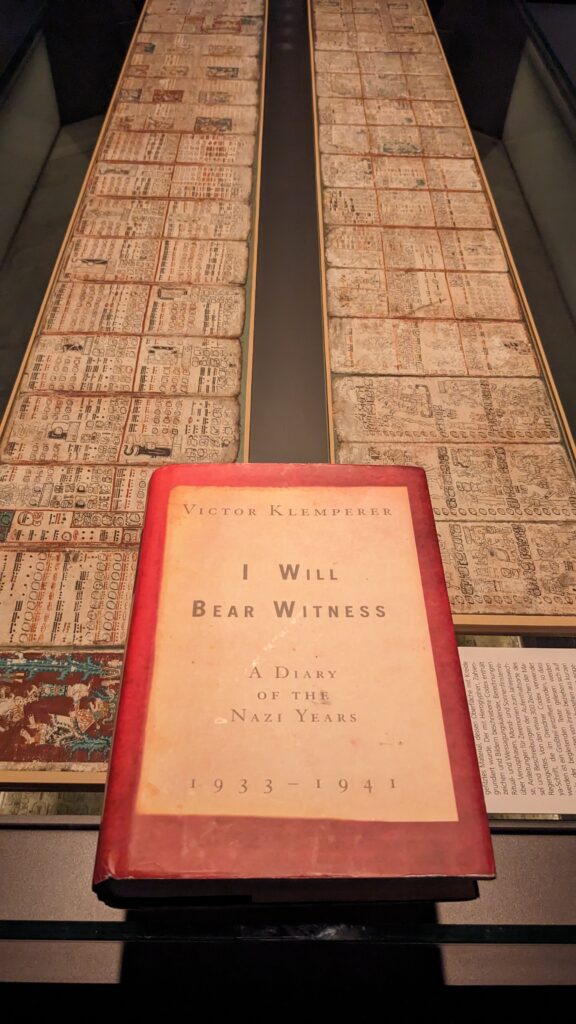
I would like to bring this to a close by talking about one of the main benefits of approaching these issues from the perspective of an artist. Art frees us from the usual restrictions. Not everything needs to “make sense” in the traditional sense. Art allows us to investigate our reality instead of accepting everything we are told as the gospel truth. Art allows us to take conceptual risks. Under the banner of the arts, perspectives that are heretical in the mainstream can find an audience of like minds. Art has potential to connect folks across the lines of ethnicity, religion, gender, sexuality and socio-economic status. I truly believe that art will play a fundamental role in the resolution to the current crisis in Palestine. The photo directly above was taken in Dresden inside the shatzkammer that holds one of the rarest and most valuable texts in the world, the Dresden Mayan Codex. In part two I will explain how studying the life and work of the Klemperer’s (especially his wife Eva) led me to an understanding of the importance of this ancient Mayan text, especially in relation to Germany’s colonial history.
The above photo juxtaposition is an example of how as an artist you need to trust your instincts. Without having done any serious research into it yet, I sensed that there was some connection between Klemperer’s diaries and this Mayan text. Inspired by Eva Klemperer’s “Red Indian fate” observation I brought the diaries with me on my last trip to Dresden in late September of 2023. It was not until I was back in the United States that I learned about the Jewish Indian theory and how antisemitism played a crucial role in the terrible crimes committed against Native Americans. Genocides do not happen in isolation. While reflecting on the juxtaposition in the above photo I came to understand that this Mayan codex needs to be returned to Chichén Itzá where it belongs and Klemperer’s original diary pages should take its place in the shatzkammer. Because not only is Klemperer’s diary a historical treasure, it’s a veritable book of souls introducing us to perspectives and voices that otherwise would have been lost forever. In part two I will unpack the more esoteric angles of this and share more of Victor the cat’s role in assisting me with this socially engaged art project. I will also explain my rationale for leaving him behind in Germany. The photo below is a picture of him at the last place we stayed together – on Dresdener Straße in Berlin, shortly before I returned to the States.

